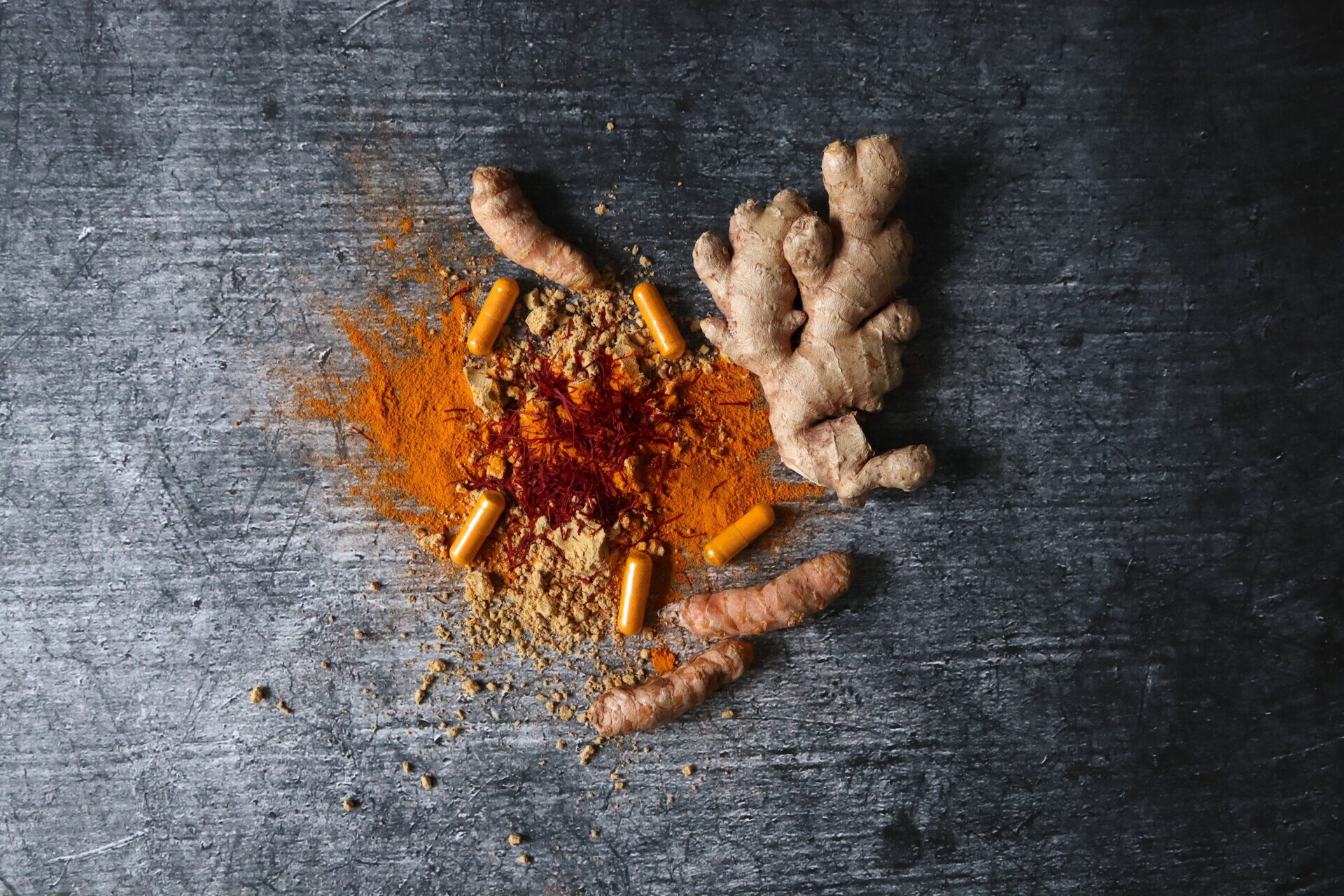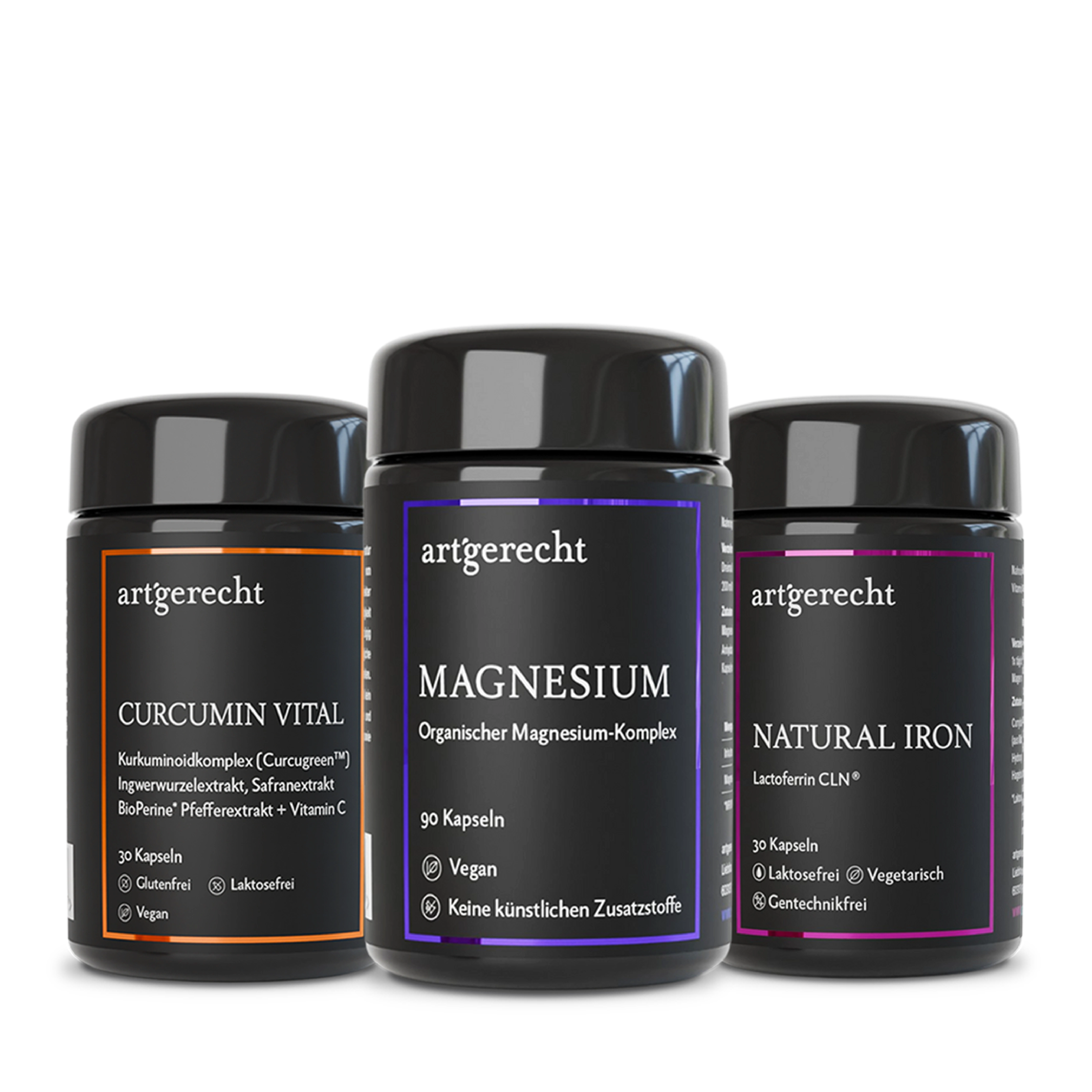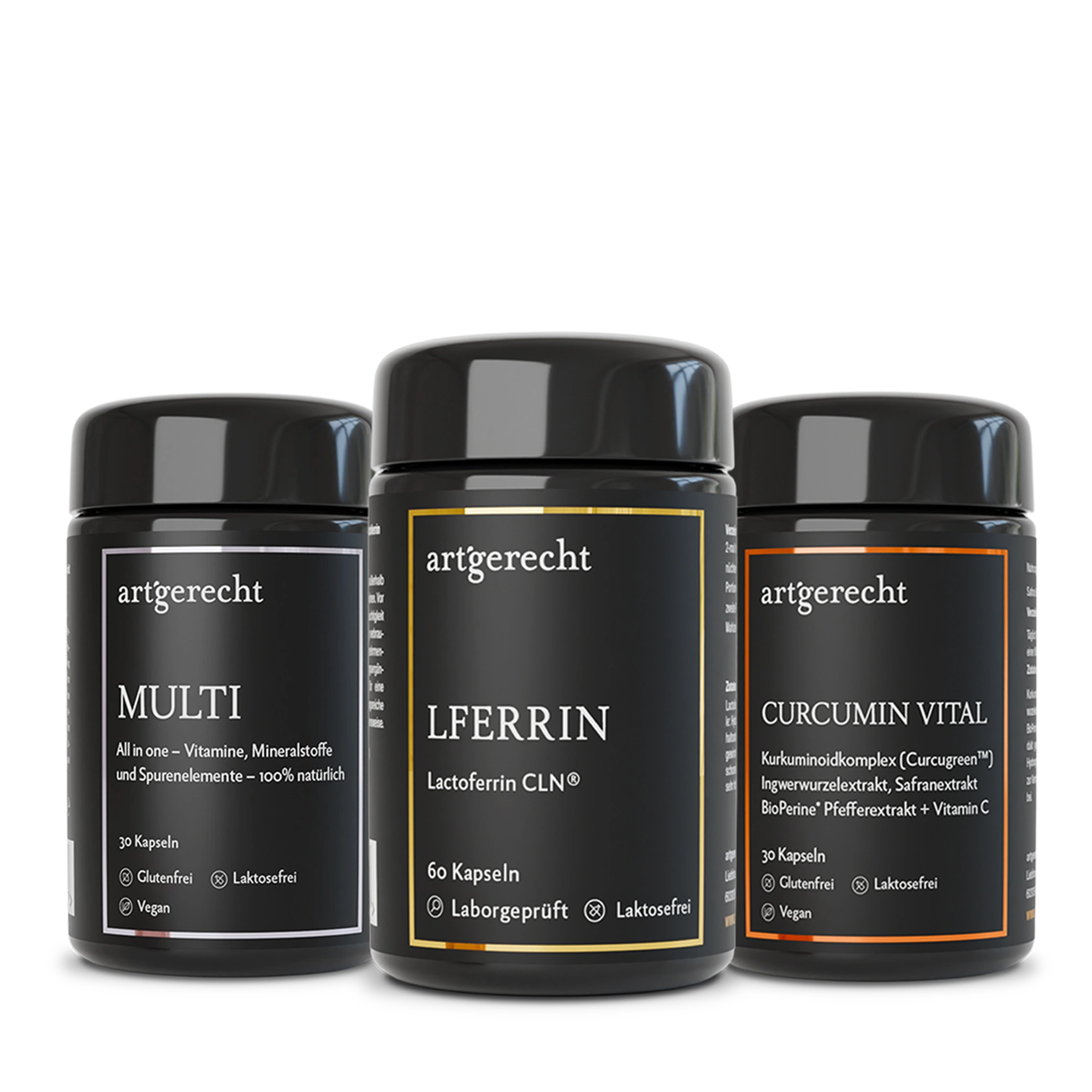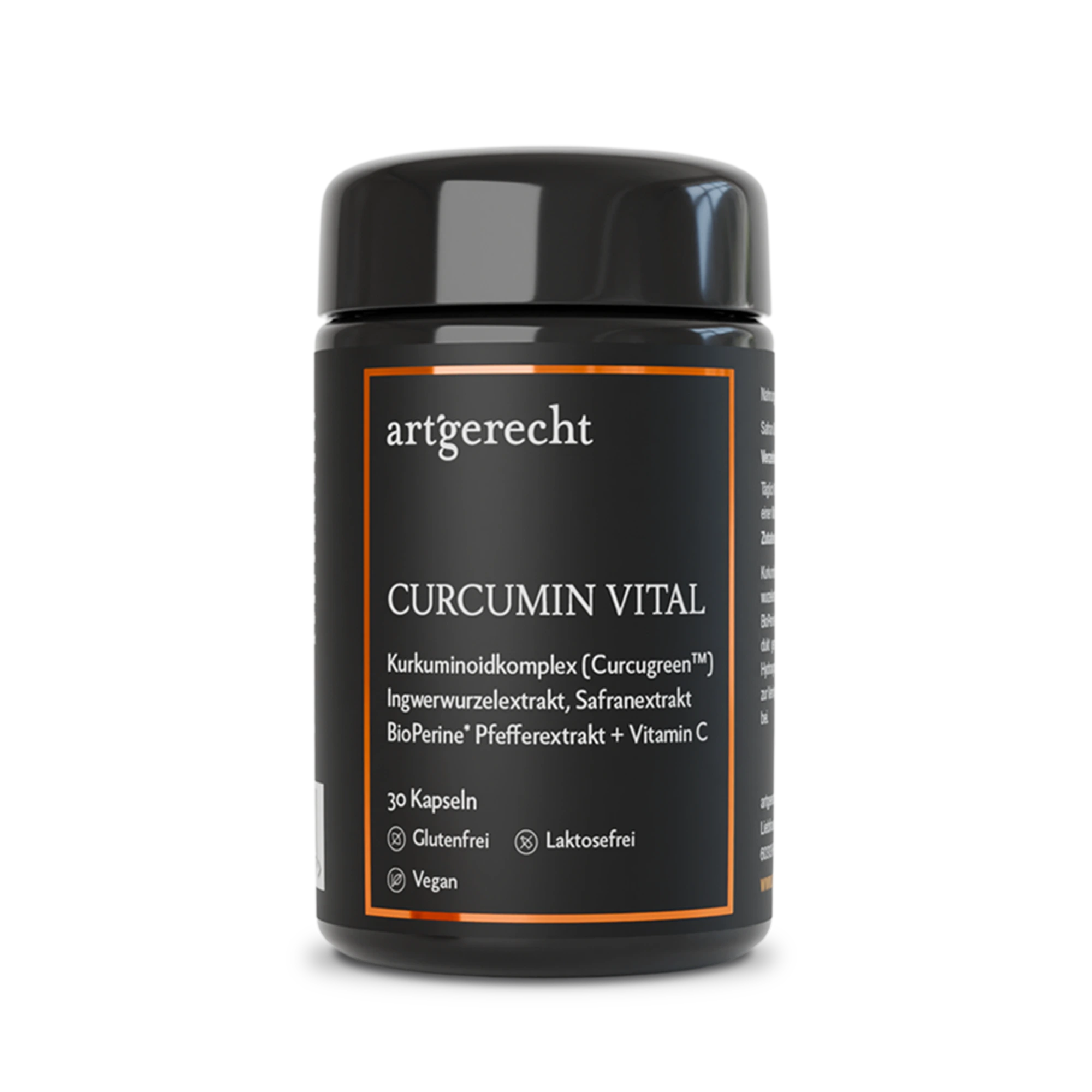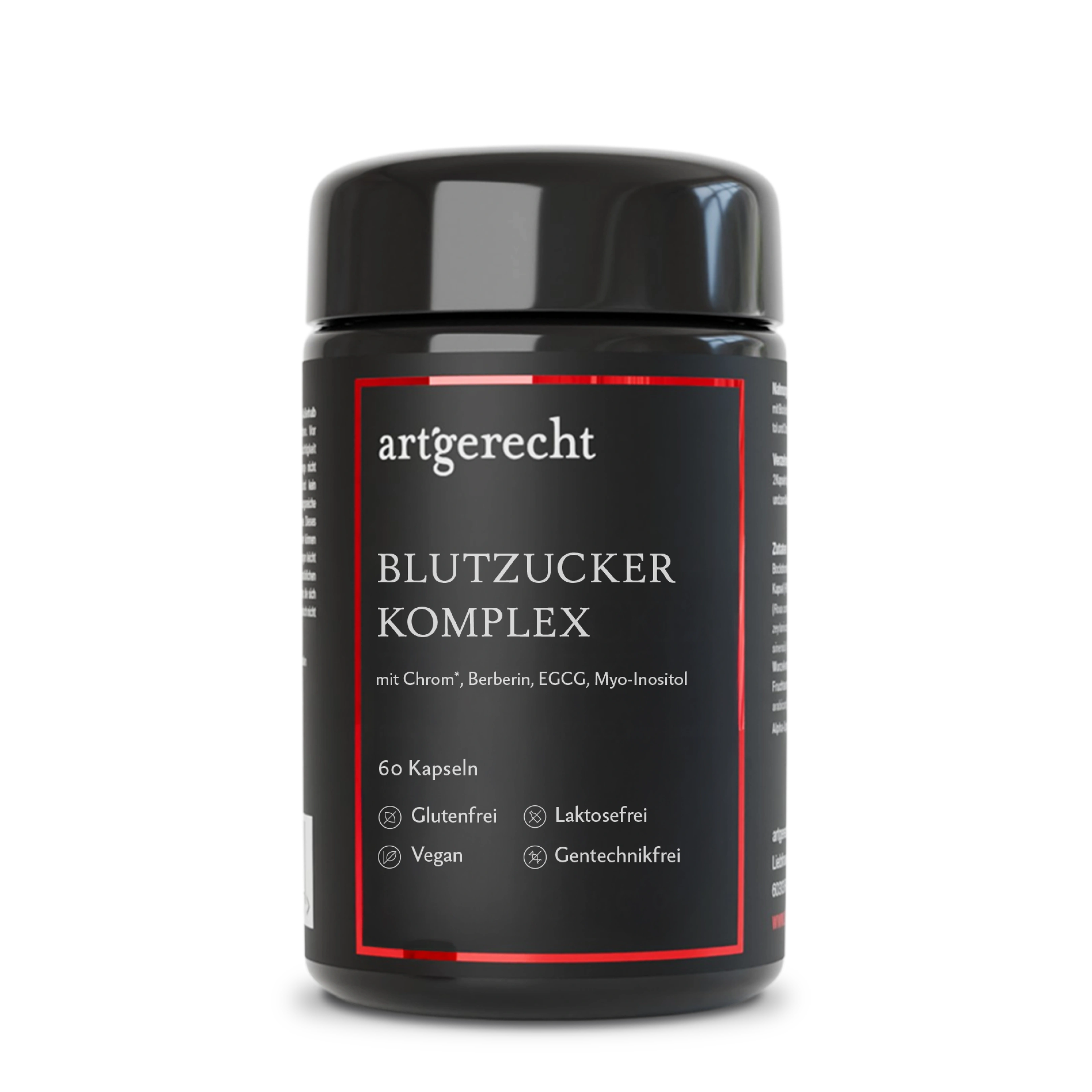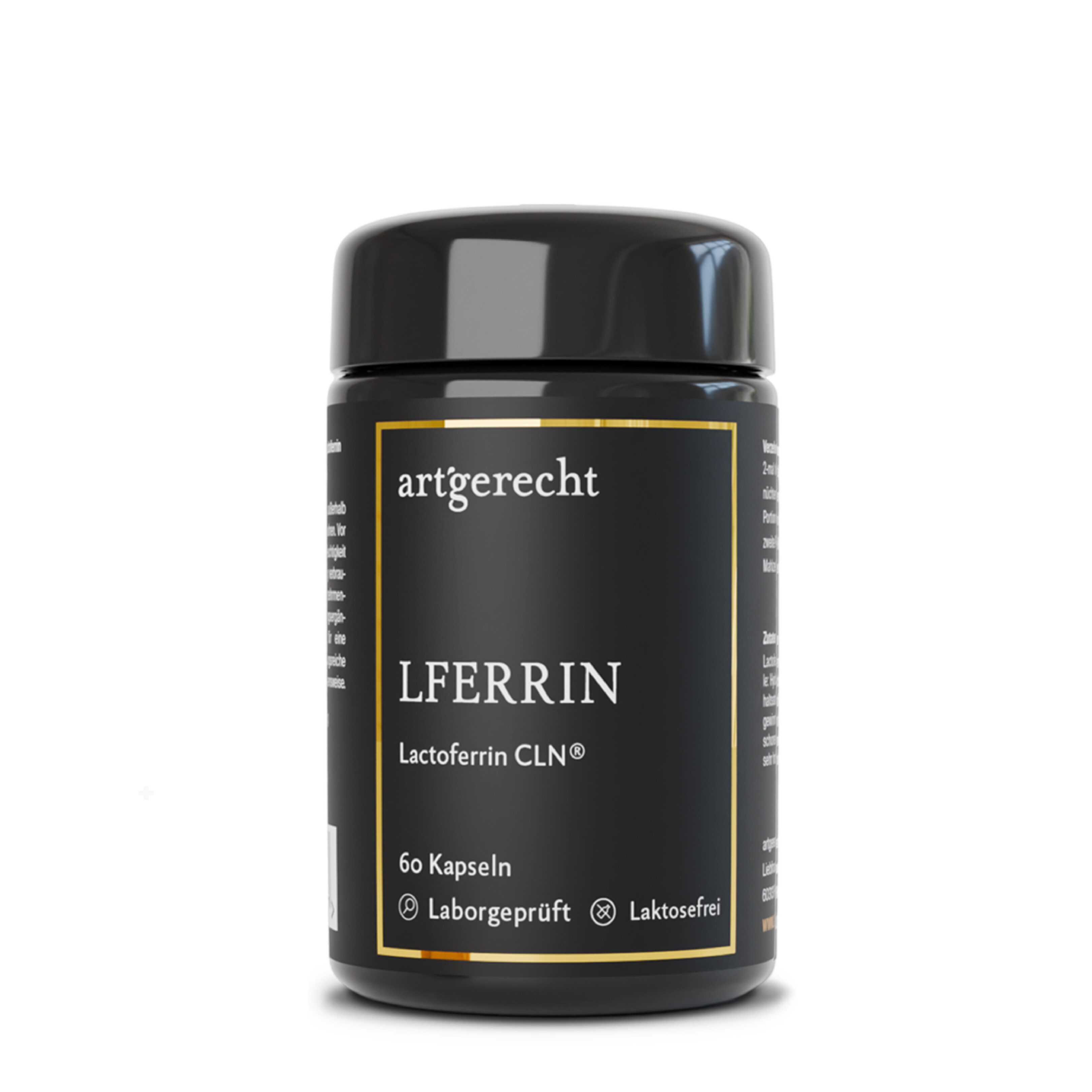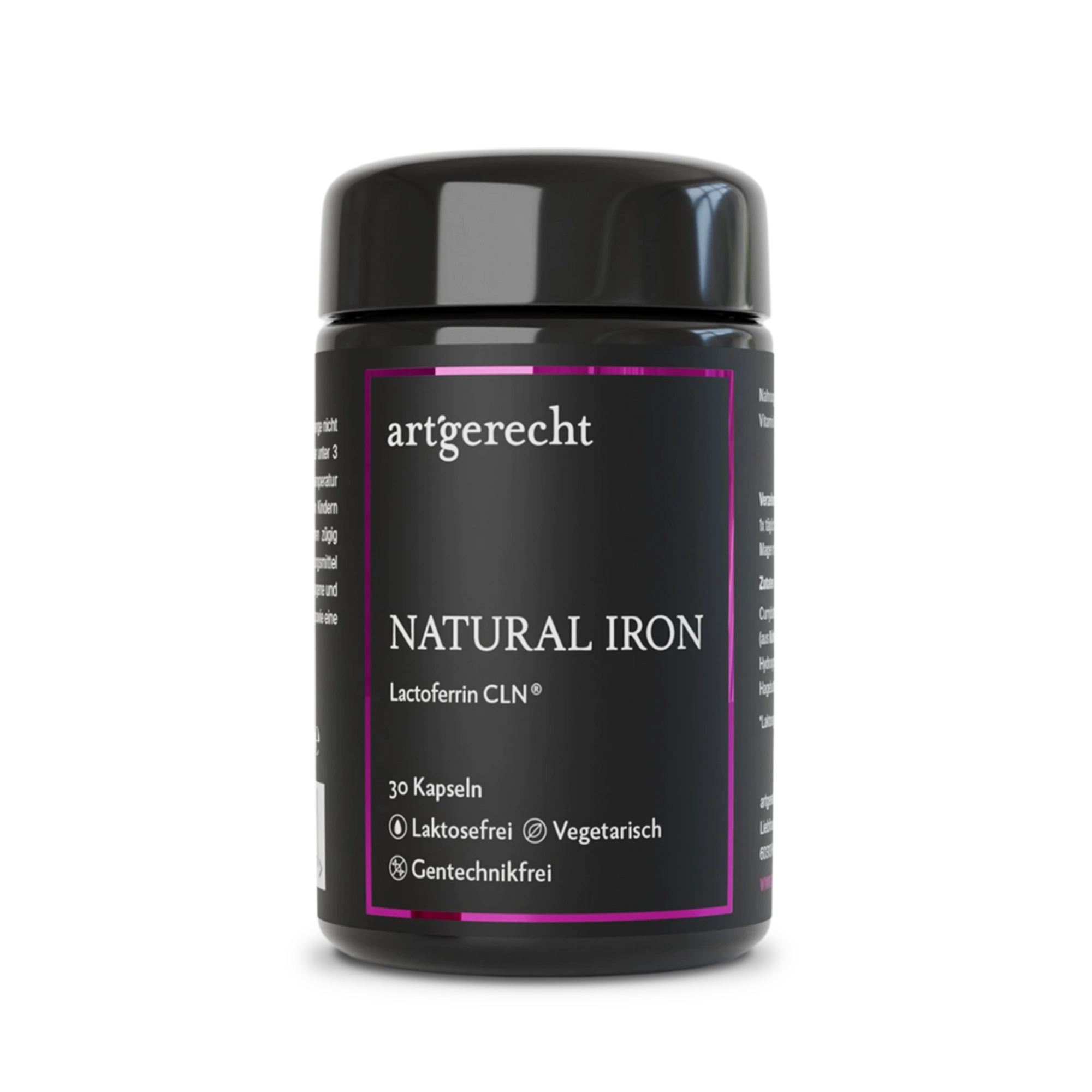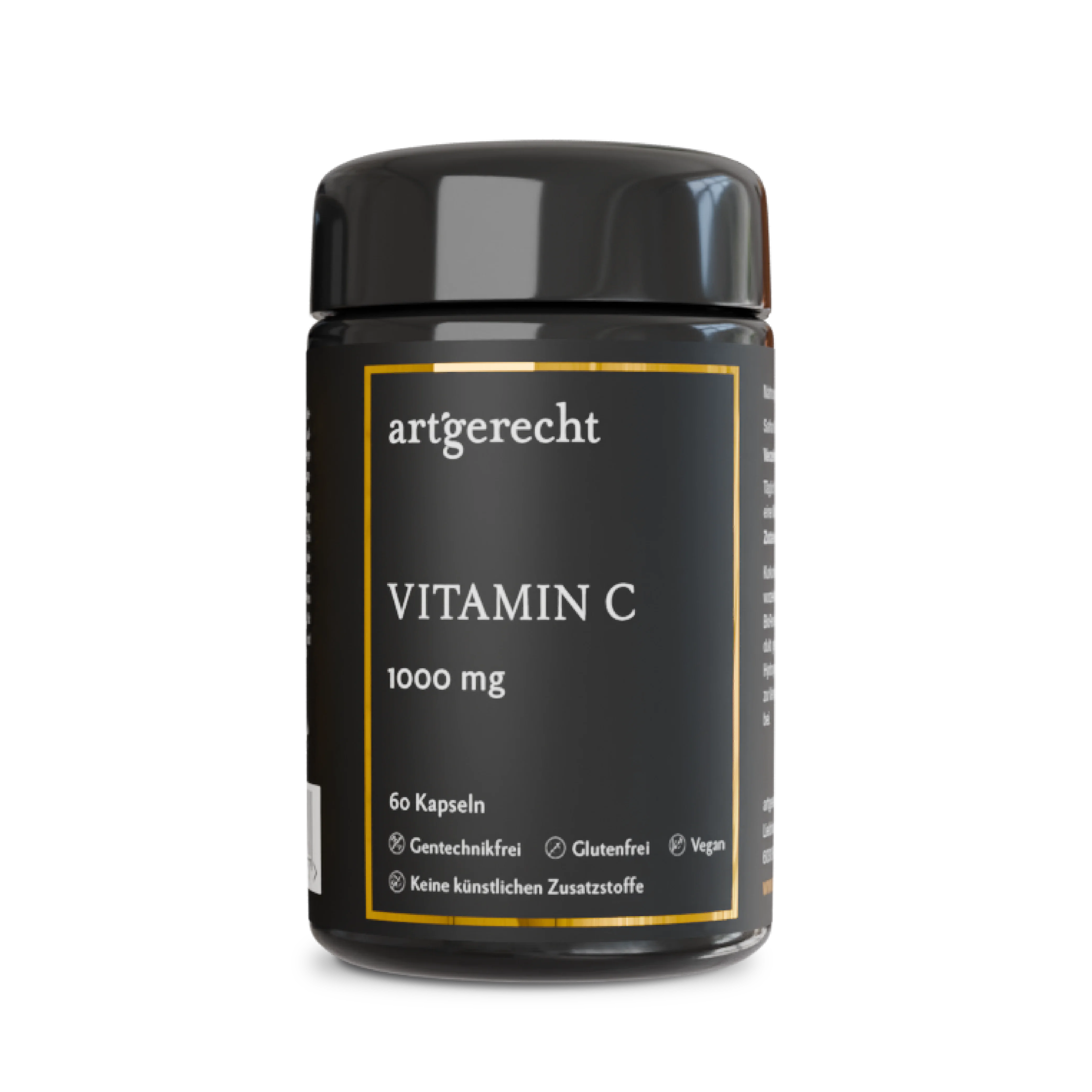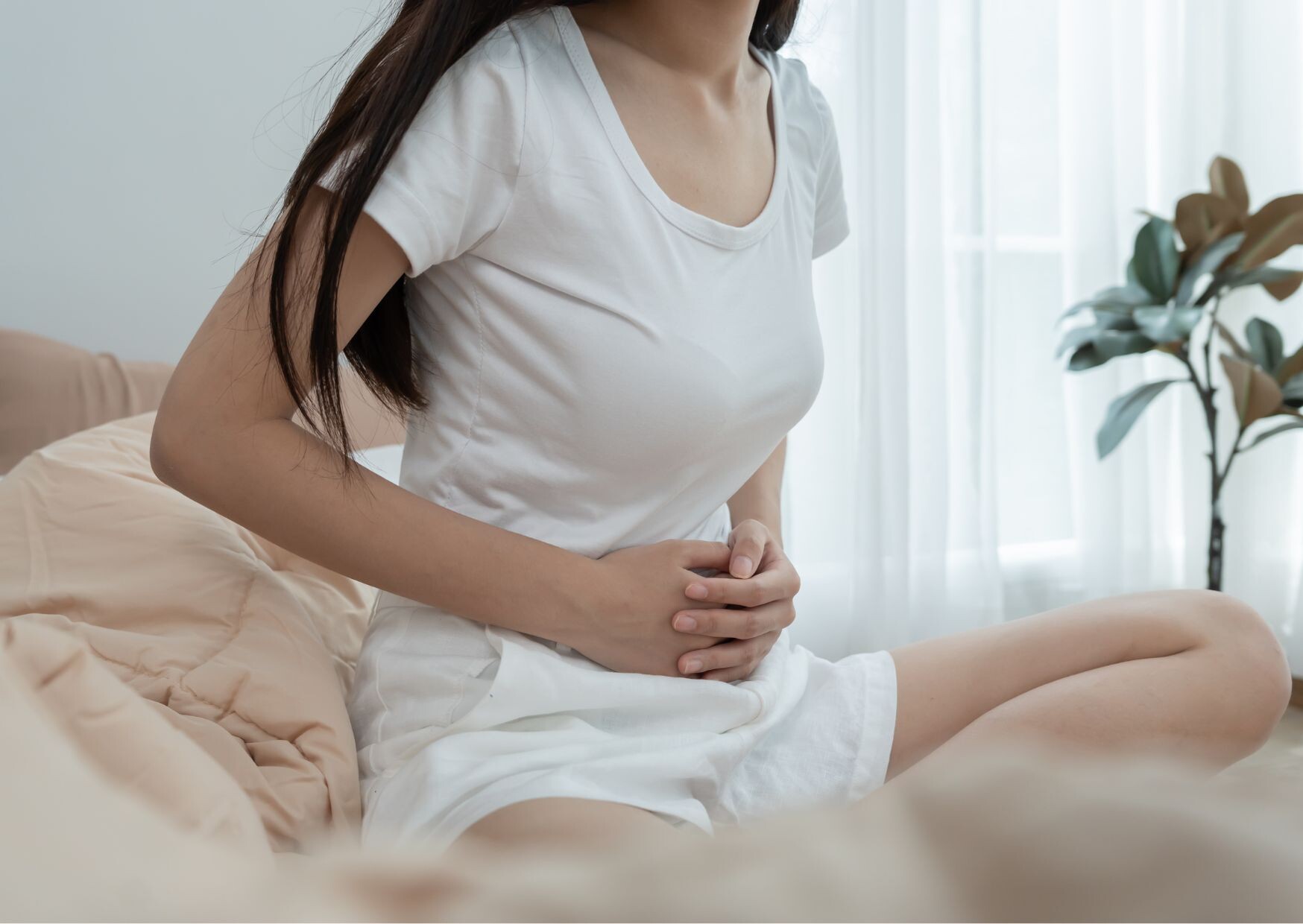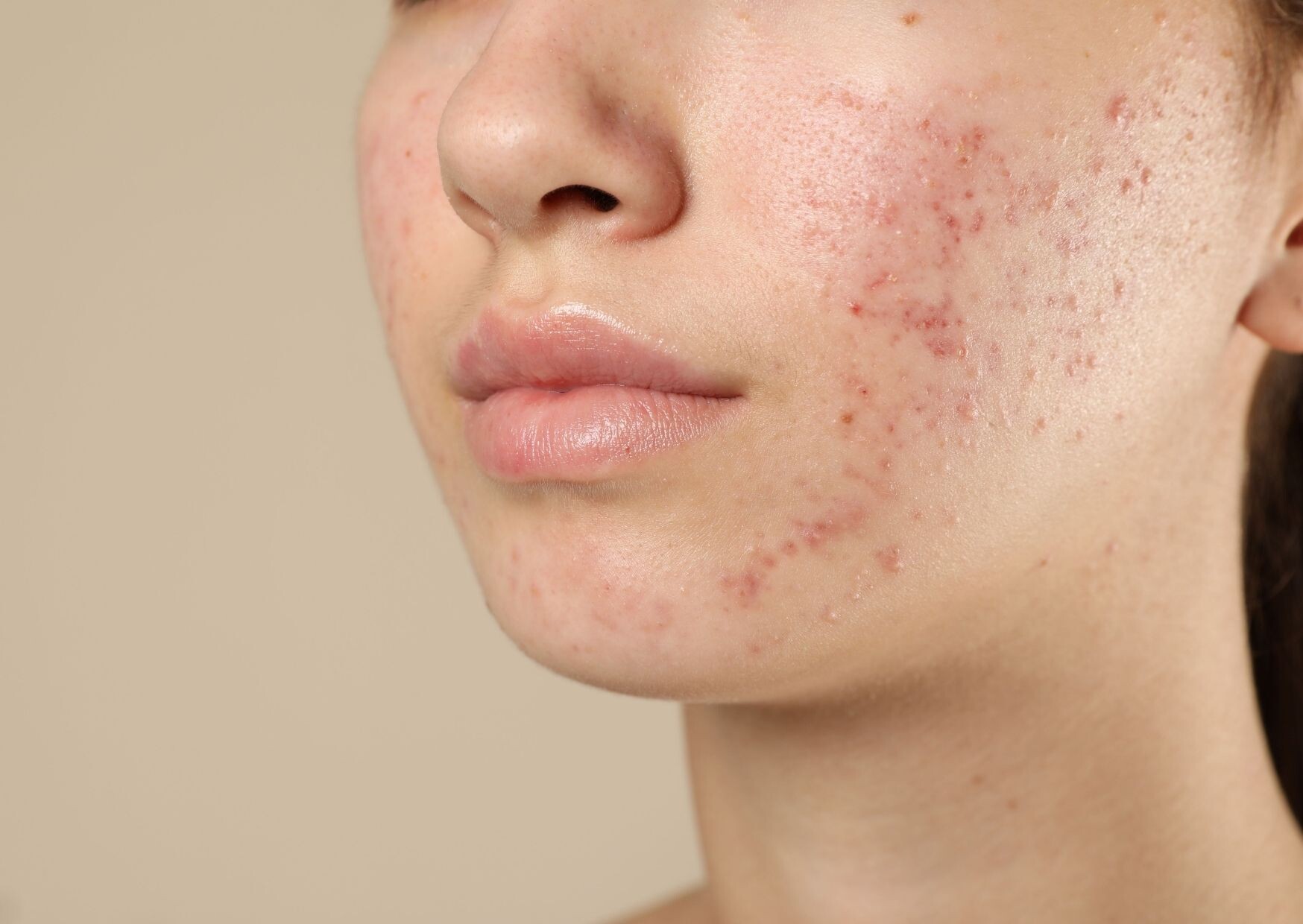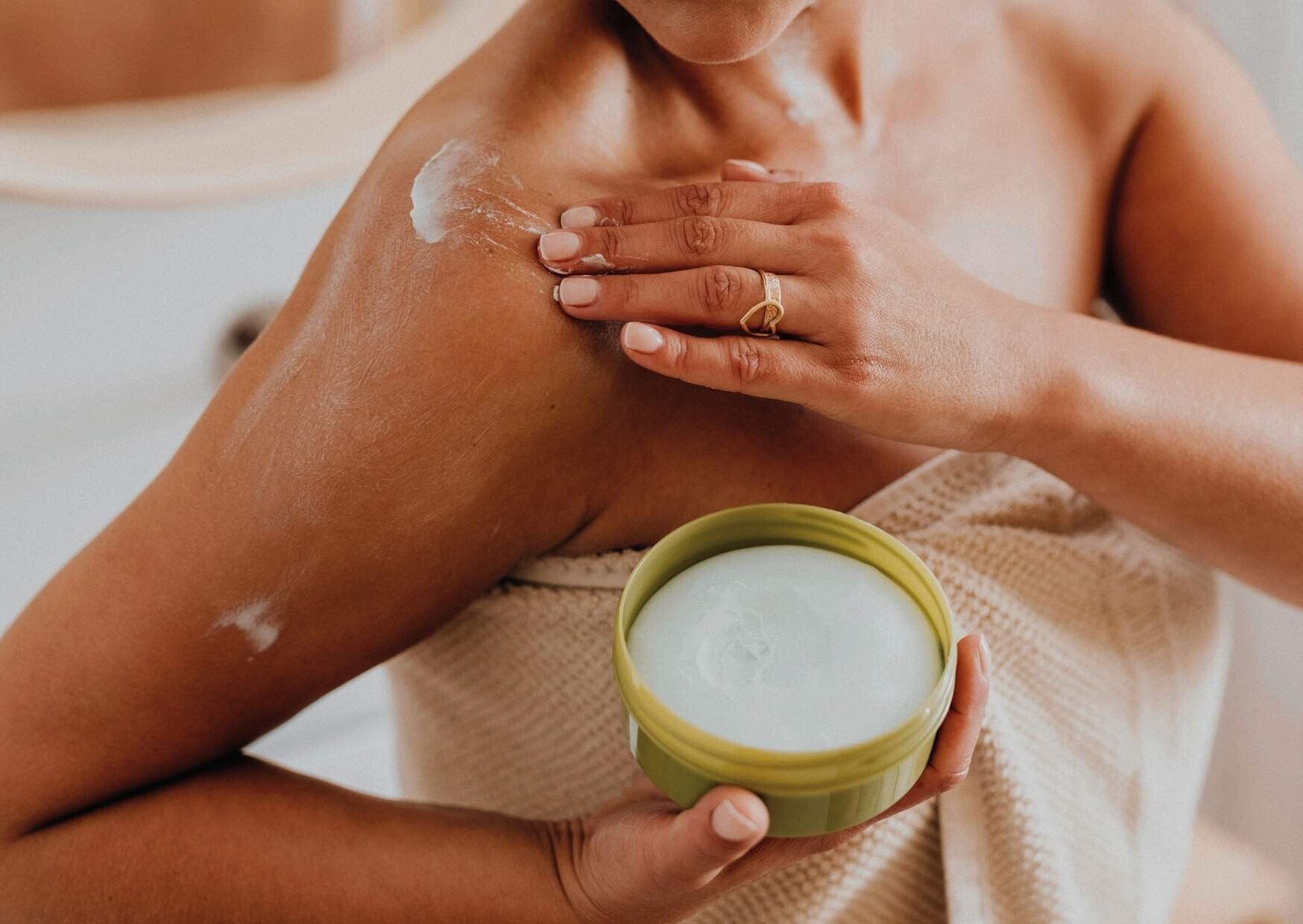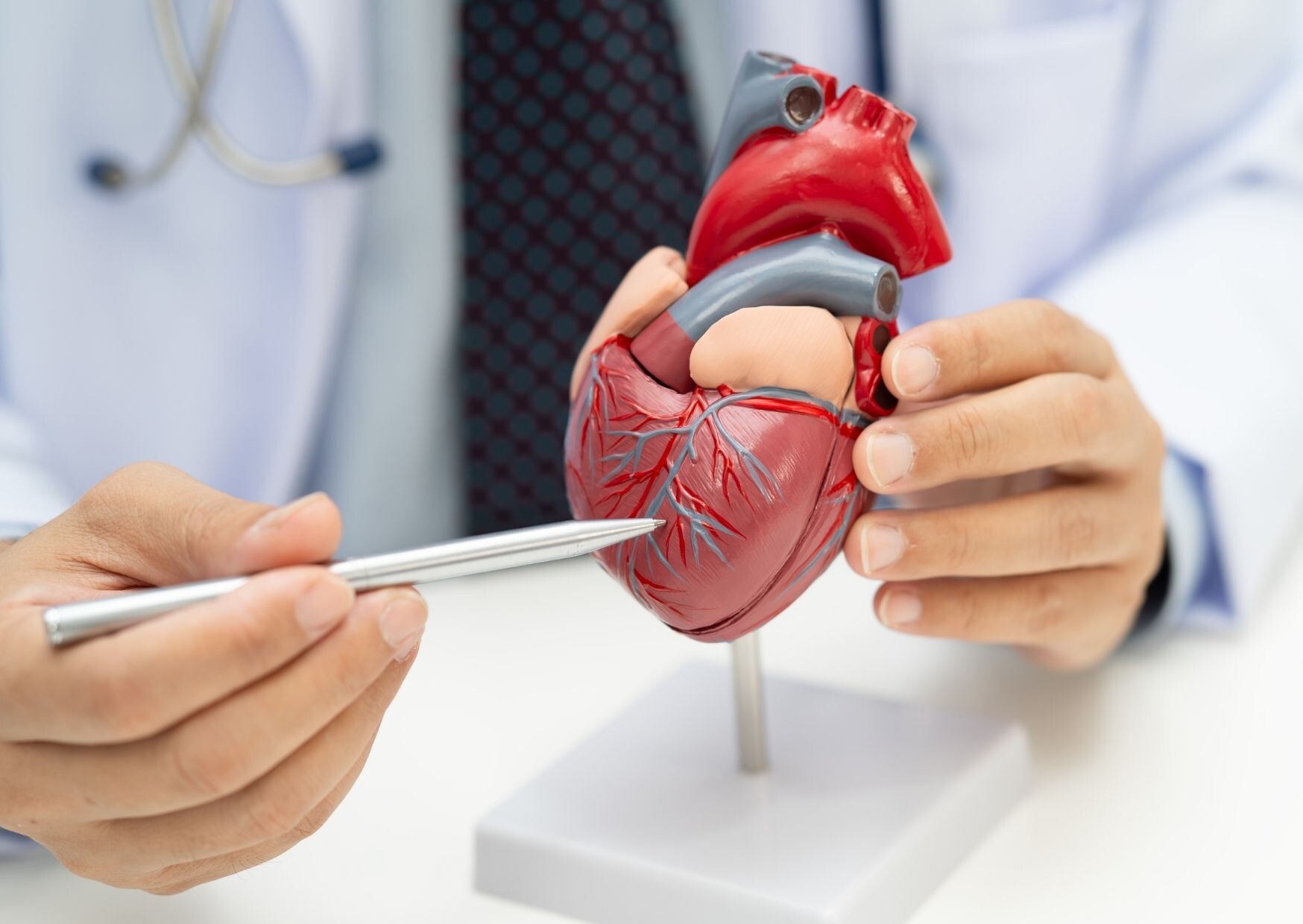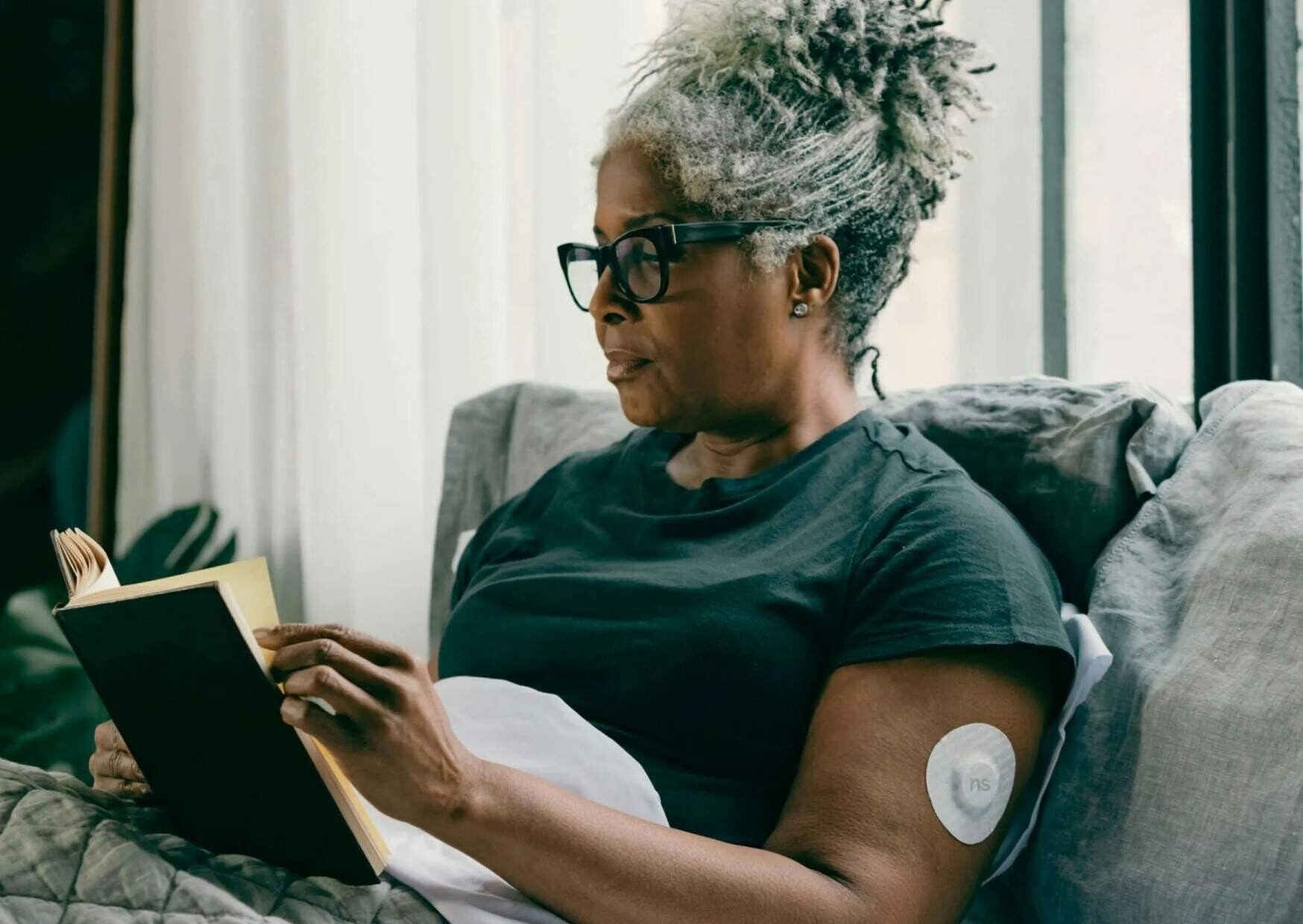The history of turmeric: a healing plant with tradition
The dried, ground rhizome of the perennial plant Curcuma longa has been used since the second millennium BC. Its effectiveness is already mentioned in the ancient Hindu scriptures, the Ayurvedic texts.
Curcuminoids: the active ingredients of turmeric
Curcuma spp. contains turmerin, a water-soluble active ingredient, as well as essential oils such as turmerone, atlantone and zingiberene. Curcuminoids are phenolic compounds extracted from the roots of Curcuma spp.. Curcumin, a low molecular weight polyphenol, was first chemically described in 1910 and is generally considered to be the most active component of turmeric, accounting for 2-8% of most turmeric preparations [1]. Curcuma longa is traditionally used in Asian countries as a medicinal plant to treat various diseases, as it has antioxidant, anti-inflammatory, antimutagenic and antimicrobial properties [2].
Curcumin in the fight against inflammation
Curcumin can reduce inflammation by intervening in many inflammatory processes. The production of reactive oxygen radicals influences the expression of nuclear factor-κβ (NF-κβ) and tumor necrosis factor alpha (TNF-α), both of which play a key role in the development of inflammation. Curcumin could reduce oxidative stress and the associated inflammation. Both in vitro and in vivo studies show that curcumin acts as a TNF-α blocker through its direct interaction with TNF-&alpha. Curcumin can also inhibit NF-κβ, the main transcription factor that initiates inflammatory processes. Furthermore, curcurmin can have a positive influence on the signaling pathways in joint inflammation and inflammation of the digestive system. Curcurmin can also be beneficial for metabolic syndrome and the prevention of cardiovascular diseases [2]. Curcumin has also been observed to have positive effects on respiratory diseases such as bronchial asthma and chronic obstructive pulmonary disease (COPD). In both diseases, there is an inflammatory condition that activates the NF-κB signaling pathway. This in turn leads to a modification of histone deacetylases (HDCAs), which play a key role in the development of corticosteroid resistance. Curcumin was shown to be able to restore HDCA activity, thereby improving the efficacy of corticosteroids [3].
Improving the bioavailability of curcumin
The bioavailability of curcurmin is comparatively low [3]. One approach to improve this is to combine curcurmin with piperine, the main alkaloid of black pepper. Shoba et al. combined piperine, an inhibitor of glucuronidation, with curcumin and administered it to rats and healthy humans. In rats, 2 g/kg curcumin alone resulted in a maximum serum level of about 1.35 µg/ml, while piperine (20 mg/kg) increased bioavailability by 154%. In humans, serum levels of 2 g curcumin alone were very low or undetectable, but administration of piperine increased bioavailability by 2000% [4,5].
Saffron and ginger: complementary antioxidants
Saffron and ginger can offer further health benefits. Carotenoids (crocin and crocetin), such as those in saffron (Crocus sativus), are important natural antioxidants that play an important role in health. They protect cells and tissues from the potentially damaging effects of free radicals and reactive oxygen species (ROS). Crocin in particular is the most intensively studied component of saffron with regard to its antioxidant properties. However, crocetin also showed positive effects in high doses (40mg/kg) on the development of insulin resistance and the spread of dyslipidemia via the regulation of LDL (low density lipoprotein) [6]. Ginger has also shown positive effects on diseases in which increased ROS production is described. Early animal model studies describe protection against oxidative stress with ginger supplementation. In rheumatoid arthritis, ginger showed an anti-arthritic effect both in vitro and in vivo models [7].
CURCUMIN VITAL: Natural support for your health
In addition to a balanced diet, CURCUMIN VITAL from artgerecht with its powerful natural ingredients turmeric (CurcugreenTM), ginger and saffron can support you with its antioxidant properties.
CurcugreenTM is a proprietary preparation of turmeric rhizomes (underground stems of Curcuma longa) formulated by Arjuna Natural Extracts Ltd. from Alwaye (India) [8]. Approaches to increase the bioavailability of curcumin include the development of curcumin nanoparticles, liposomes, micelles and phospholipid complexes [3]. For the production of CurcugreenTM , turmeric is traditionally grown in Assam (India) without the use of herbicides or pesticides. The rhizomes are sun-dried, pulverized and treated with ethyl acetate and ethanol to concentrate the curcuminoids. After cooling, the curcuminoids crystallize out. The essential turmeric oil is isolated by steam distillation. Both components are then mixed with filtered water to form a slurry and the water is removed under vacuum to obtain a uniform mixture with a ratio of 25:1 (herb to extract). This increased the bioavailability of curcumin in humans by a factor of five to seven [8].
[2] Pulido-Moran, M., Moreno-Fernandez, J., Ramirez-Tortosa, C., & Ramirez-Tortosa, M. (2016). Curcumin and health. Molecules, 21(3), 264.
[3] Aggarwal, B. B., & Harikumar, K. B. (2009). Potential therapeutic effects of curcumin, the anti-inflammatory agent, against neurodegenerative, cardiovascular, pulmonary, metabolic, autoimmune and neoplastic diseases. The international journal of biochemistry & cell biology, 41(1), 40-59.
[4] Anand, P., Kunnumakkara, A. B., Newman, R. A., & Aggarwal, B. B. (2007). Bioavailability of curcumin: problems and promises. Molecular pharmaceutics, 4(6), 807-818.
.[5] Shoba G, Joy D, Joseph T, Majeed M, Rajendran R, Srinivas PS. Influence of piperine on the pharmacokinetics of curcumin in animals and human volunteers. Planta Med. 1998;64(4):353-356. doi:10.1055/s-2006-957450
[6] Mzabri, I., Addi, M., & Berrichi, A. (2019). Traditional and modern uses of saffron (Crocus sativus). Cosmetics, 6(4), 63.
[7] Ballester, P., Cerdá, B., Arcusa, R., Marhuenda, J., Yamedjeu, K., & Zafrilla, P. (2022). Effect of ginger on inflammatory diseases. Molecules, 27(21), 7223.
[8] Barrett, Marilyn L. “BCM-95®/CURCUGREENTM.” (2019).

